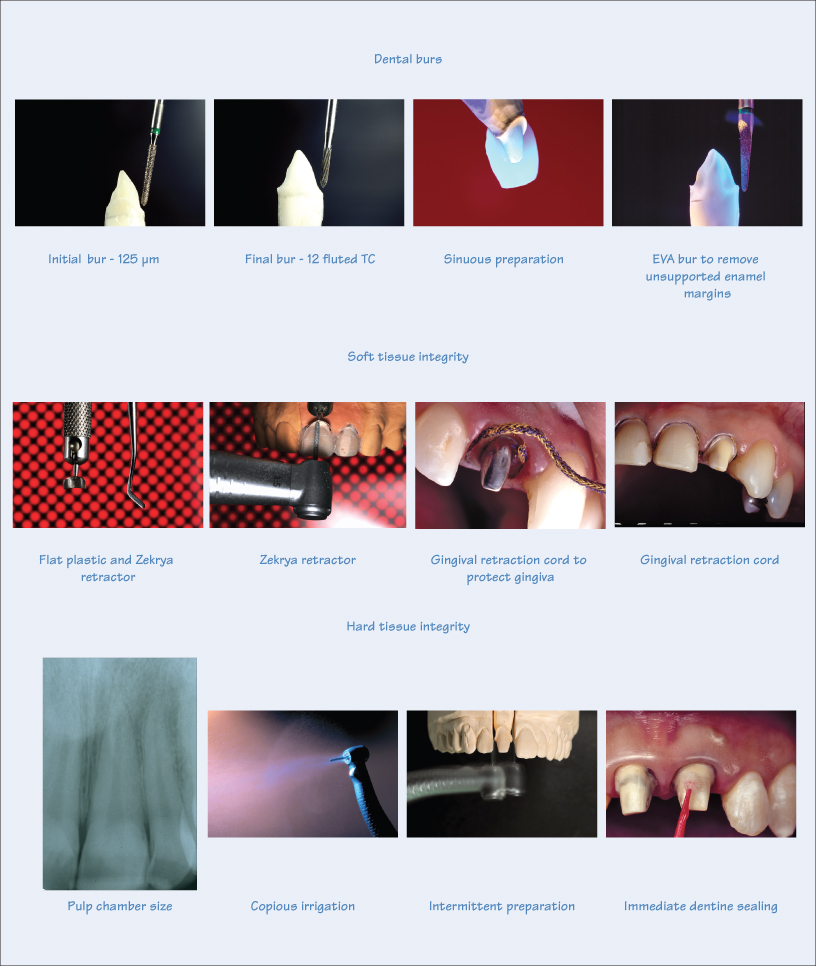33
General Guidelines for Rotary Tooth Preparation

Conventional tooth preparation involves using rotary instruments in preparing teeth to receive either direct or indirect restorations, and is currently the most widely used method worldwide. Tooth preparation is potentially destructive to both the hard and soft tissues, and should be carried out efficaciously, expediently and with extreme care to avoid inadvertent or iatrogenic trauma. The guidelines presented below are applicable to all types of tooth preparation using rotary instruments.
Instrumentation
Rotary instruments refer to burs that prepare a tooth by either grinding or cutting. A dental bur has a stainless steel shank with blades of various geometries and shapes. Alternatively, the bur shank can be coated with diamond grits or tipped with tungsten carbide (TC) blades or flutes, for cutting or polishing, respectively. The most popular variety are diamond burs, which are classified according to their shape, size and the diamond grit particle size that varies from 10 µm to over 200 µm. The bur shank fits either a friction grip (FG) turbine handpiece, or a latch-type attachment of a micro-motor contra-angle (CA) handpiece. The specifications of handpieces vary according to the manufacturer, but are broadly divided into turbines rotating at speeds above 300,000 rotations per minute, while the slower micro-motors speeds vary from 1,000 to 40,000 rotations per minute, depending on torque and gear reduction/increasing ratios.
Soft Tissue Integrity
The soft tissues of the oral mucosa, tongue and lips should be sufficiently retracted to allow a clear field of view and to prevent lacerations by the rotary instruments. The circumferential friable gingival margin requires special attention, to minimise not only transient but also long-term effects of trauma. The initial trauma is bleeding, which hinders clinical procedures such as margin visualisation, impressions and cementing procedures, while long-term effects inc/>
Stay updated, free dental videos. Join our Telegram channel

VIDEdental - Online dental courses


